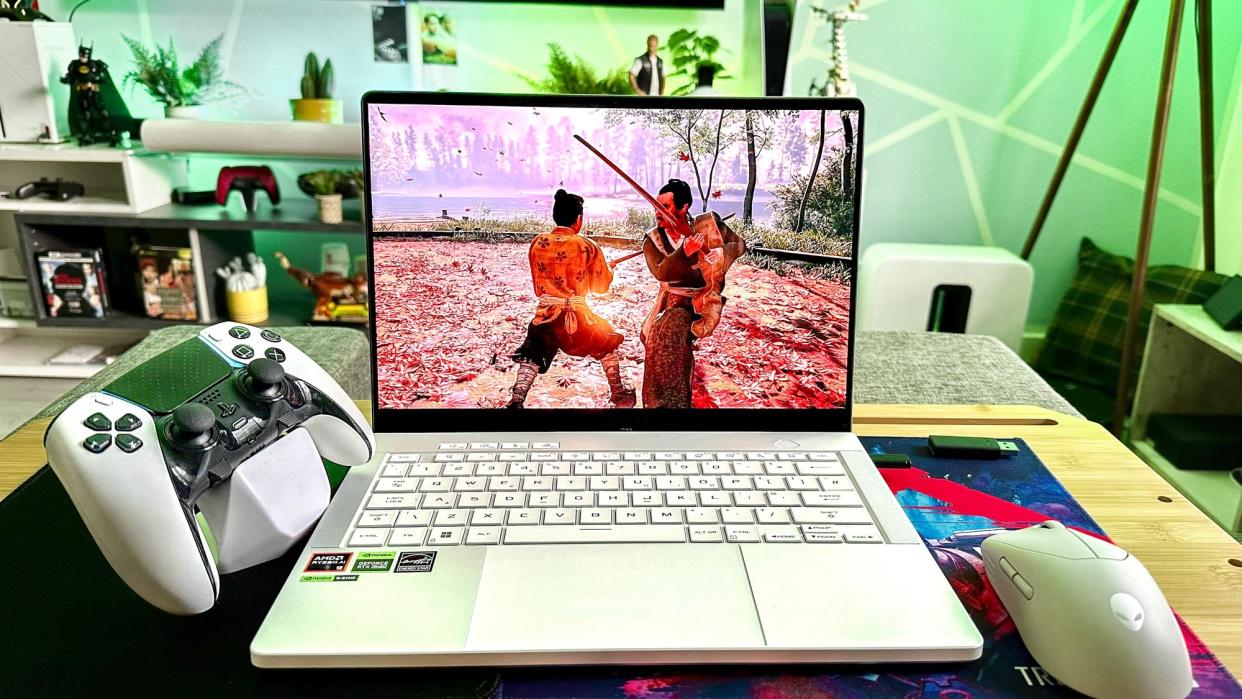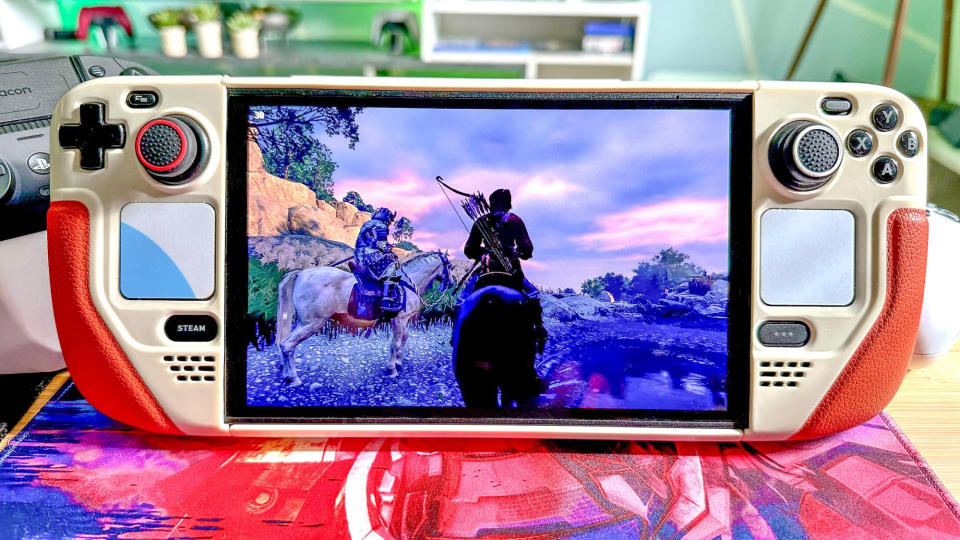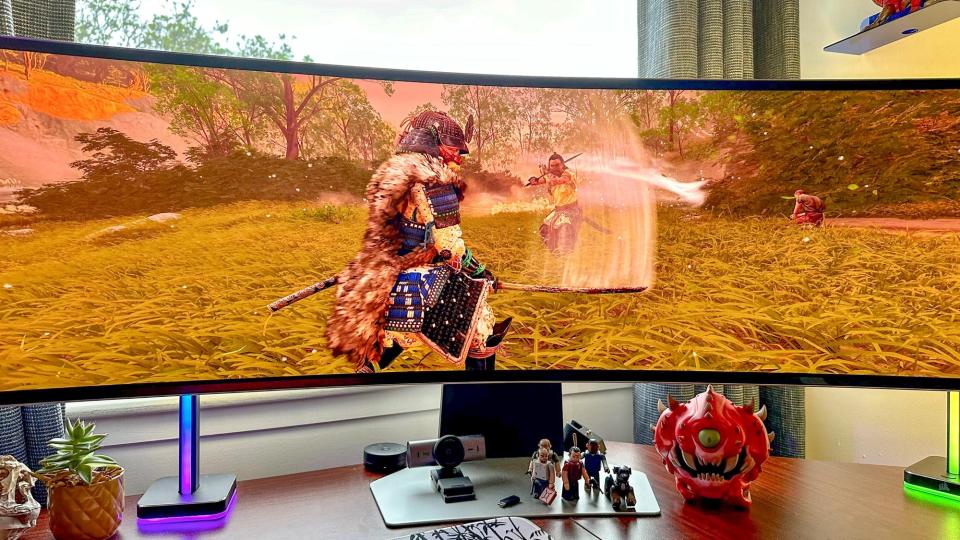The best PS5 port I’ve ever seen is a stunning advert for PC gaming

The recently released PC version of Ghost of Tsushima: Director’s Cut has been crafted with such exceptional care by porting specialists Nixxes Software, it’s made me semi-tempted to sell my PS5. Let me explain why.
If Sony is willing to cut the timed exclusivity window of its first-party games from the roughly 18-month to two-year cycle PC gamers currently have to endure before the likes of Days Gone or God of War become available on their rigs to a year or less, I’d give serious thought to giving up on my PS5 to await for what feels like increasingly inevitable PC versions.

Asus ROG Zephyrus G14 (2024): $1,599 @ Best Buy
This is probably the closest to a gaming MacBook Pro that you can buy — packing a gorgeous 3K OLED display, AMD Ryzen 9 8945HS CPU, RTX 4060 GPU, 16GB LPDDR5X RAM and a 1TB SSD into a sleek aluminum chassis with a fantastic keyboard and touchpad. Ghost of Tsushima runs superbly on this incredible gaming laptop. View Deal
Let me get something off my chest before I start ladling love all over Sony’s latest top-tier port: I don’t actually think Ghost of Tsushima is a great video game. For my money, it’s a super handsome sandbox set on a beautiful 13th Japanese island, and its slice-and-dice samurai swordplay is close to being exceptional. But it’s stuffed full of the sort of tiresome filler content Ubisoft open-world games have dined on for far too long, while its story is reasonably well acted yet ultimately dull.
It’s also a shame that Tsushima’s launch week on PC has been blighted by controversy. Indeed, it’s being delisted and preorders are being refunded in countries without PSN access, in part because of the new PlayStation overlay that has debuted in Jin Sakai’s blood-soaked tale of revenge, which finally allows you to earn Trophies on PC.
With those not insignificant downers out of the way, let me start gushing over Ghost of Tshusima’s PC port. It’s astonishingly good. Like “best console-to-PC port I’ve literally ever played" good. That sounds wildly definitive, but hopefully I can sway you towards my line of thinking as I elaborate on what makes this version such a wonderful advert for fans of the best gaming PCs and best gaming laptops.
What makes Ghost so truly special is it’s one of the most effectively optimized ports I’ve ever seen. I’ve spent most of my evenings testing it across my admittedly monstrous RTX 4090 mega rig and expensive but amazing Asus ROG Zephyrus G14 (2024), so I can’t deny a lot of my time with this samurai sandbox has been spent on cutting edge hardware.
Letting off Steam

A key counterpoint? Ghost of Tsushima also runs admirably on my much more moderately powered and affordable Steam Deck OLED. Locking the game to a rock-solid 30 frames per second is a relative breeze if you knock some graphics settings down to medium and make use of image upscaling, while also setting “Dynamic Resolution Scaling” in the display menu to 30.
Those two features are largely responsible for why Jin’s eye-arousing adventure performs so damn well across a variety of PC hardware. I’ve said it before ‘round these parts, but I’d always suggest enabling super sampling when it’s available. And in the case of Tsushima, it’s got all bases covered in this regard. Not only does it support Nvidia’s superb DLSS, AMD FSR 3.0 and Intel’s XeSS are also available.
I’m able to run this latest superb PlayStation port on my PC at around 150-175 fps using DLSS Quality mode"
Using Team Green’s frame-boosting tech, I’m able to run this latest superb PlayStation port on my desktop at my Samsung Odyssey OLED G9’s native resolution (5,210 x 1,440) at around 150-175 fps using DLSS Quality mode. And because Samsung’s incredible super ultrawide monitor supports Nvidia G-Sync, I never once feel any frame rate fluctuations, as the refresh rate of my display is synchronized with the fps output of my GPU.
On all three systems I’ve played Ghost on, it feels buttery smooth at every juncture. Appropriate, seeing as Jin often cuts through his foes like a particularly sharp knife through melted butter.
Circling back to the super ultrawide factor, the PC port of Ghost of Tsushima: Director’s Cut is one of the few games where I’ve seen cutscenes properly support that 32:9 aspect ratio. Considering there are a ton of story moments in Sucker punch’s samurai quest, it’s great to see cinematics fill my colossal monitor’s screen without any vertical black bars.
A PC port for the ages

On the high-end desktop I do most of my gaming on (and admittedly it doesn’t get much better than having an RTX 4090 GPU backed up by AMD’s Ryzen 7 7800X3D CPU powering your system), Ghost is incredibly performant as I alluded to with those fps stats a few paragraphs ago. Yet it also provides a great UI in its exhaustive menu options, regardless of your level of hardware.
Tweaking graphical settings immediately lets you see the on-screen differences between, say Very High or Low presets, as the menu takes up very little space on whatever display you’re playing on, with the actual game still visible in the background.
This means you can instantly see the difference when you tweak level of detail, shadow quality or screen space reflections. Considering many modern PC games force you into a restart when changing settings, the way Nixxes has nailed its customization options is incredibly praise-worthy.
Ghost of Tsushima may not be one of the best sandbox games ever made, but it is one of the best adverts for just how awesome PC gaming can be when developers put the effort into delivering a quality desktop or laptop experience. I may not love Sony’s samurai adventure, but I absolutely adore how much work Nixxes has put into this all-time great port.
